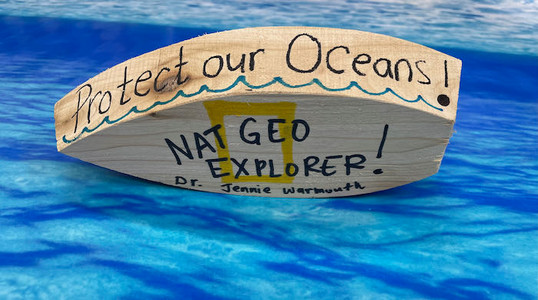On Thin Ice
- arcticfloatboat
- May 15, 2023
- 3 min read
Written by Jennie Warmouth, PhD: Teacher at Spruce Elementary, Lynnwood, WA

Greetings from the Pacific Northwest region of the USA! My name is Dr. Jennie Warmouth and I am a second grade teacher at Spruce Elementary School in the Edmonds School District, an adjunct professor at the University of Washington, and a National Geographic Explorer! My brilliant second grade students and I are thrilled to participate in the Float Your Boat project alongside the incredible team of scientists and mathematicians at the University of Washington’s Polar Science Center, the International Buoy Programme, and the Nansen Environmental and Remote Sensing Center in Norway!
My journey toward becoming a polar educator began with my 2019 expedition to Arctic Svalbard as a Grosvenor Teacher Fellow with Lindblad Expeditions and National Geographic. Our 580-student body and their families followed along as I answered their questions from the field. They were particularly interested in the effects of climate change on the rapidly declining sea ice that polar bears depend on. After hearing my reports of fewer than expected polar bear sightings and examining visual evidence of macro-plastics on the otherwise pristine shores of the Svalbard archipelago, my students began to critically examine our own school’s plastic use. They took action to change our school’s single use plastic policy by replacing plastic sporks with reusable metal silverware – successfully removing 70,000 sporks from our environmental footprint each school year. My students and I also began hosting an annual international design contest with the purpose of increasing awareness of and empathy for the Arctic and we curate an exhibition for the National Nordic Museum each spring.
Participation in the Float Your Boat project has deepened my students’ connection to the Arctic Ocean. Engagement in this work has provided rich opportunities for interdisciplinary STEAM (science, technology, engineering, arts, mathematics) learning that has included informational text reading, scientific writing, data analysis, and interactive mapping. To prepare for this project, I introduced the curious case of 28,000 rubber bath toys that a cargo ship, bound for our local port, accidentally spilled into the North Pacific in 1992. Through this preliminary investigation, my students discovered the role that ocean currents played in the movement of the bath toys to vast and varying distances around the world – including the Arctic. The second graders next studied Arctic Ocean circulation and sea ice trends in relationship to climate change before hypothesizing where their individually decorated boats might end up in the future. With that in mind, second-grade scientist Grayson posited, “I predict that my boat will end up in North America. I think this after studying the ocean currents and maps.” Students will have continued opportunities to revise their hypotheses as we track the boats’ location through real-time data.
Having the opportunity to engage in authentic data collection and analysis alongside experts in the field has helped bring science to life for my students. As second-grade scientist Camila stated, “We are so curious about the speed of the melting ice. We are worried about the polar bears’ habitat.” Thank you for enhancing my students’ commitment to climate justice through this real-world research partnership. The Float Your Boat project has provided an expansive opportunity for my students and I to imagine the ways in which we can work together toward a more just and thriving future.








Comments